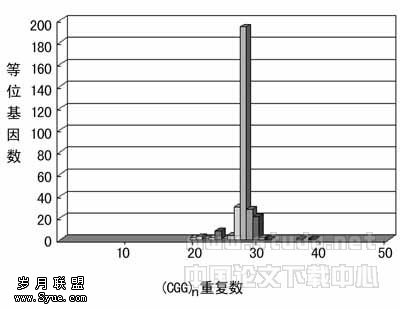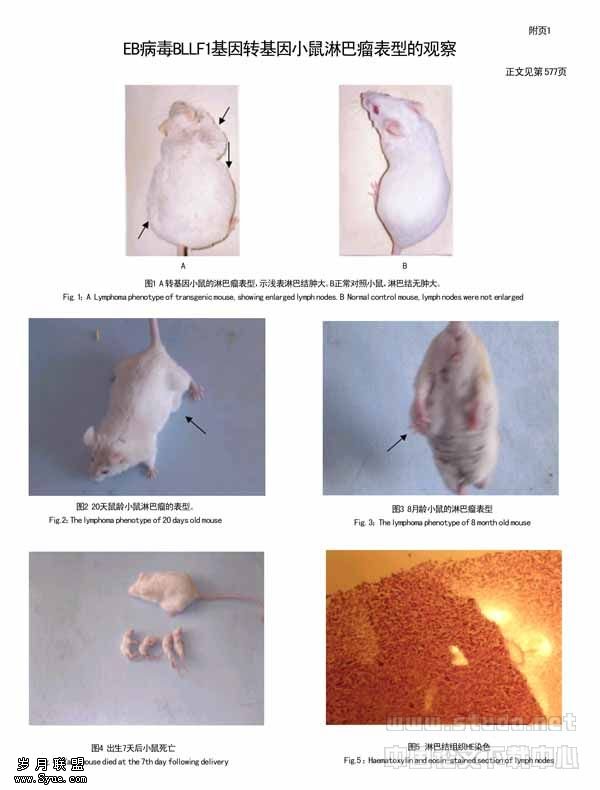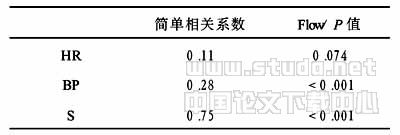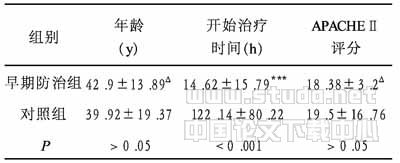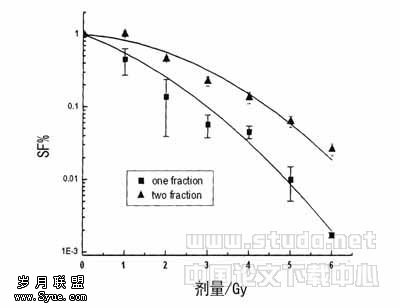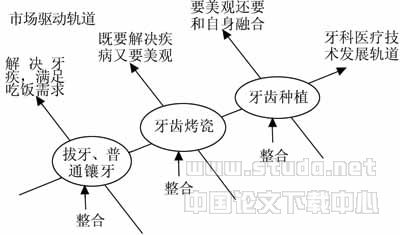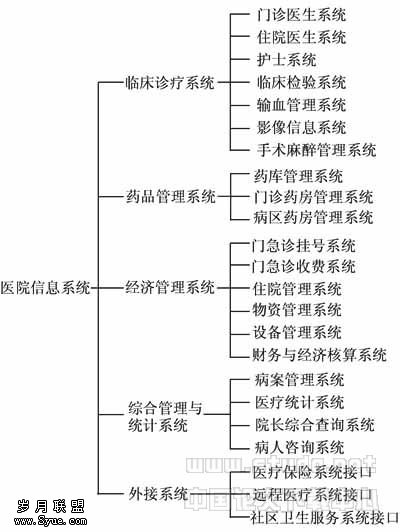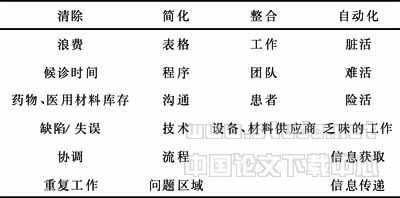Expression of junctional adhesion molecule-1 in human cornea
作者:Li-Zhong Chen , Jing Hong , Nobuyuki Ebihara , Akira Murakami
【摘要】 Abstract AIM: To investigate the expression and distribution of junction adhesion molecule-1(JAM-1) in human corneal epithelium and compare with that of occludin. METHODS: The expression in RNAs of JAM-1 and occludin was revealed by RT-PCR and the presence of protein was analyzed by the FACS method. Double immunofluorescent staining was used to determine the tissue distribution of JAM-1 and occludin in human corneal epithelium. RESULTS: The expression of JAM-1 and occludin was found in cultured human corneal epithelial cells. The double immunofluorescent study showed positive staining for JAM-1 at cell borders in the entire epithelial layer, while relatively extensive staining was seen in the superficial layer, where it coexisted with the expression of occludin. CONCLUSION: JAM-1 was expressed in entire layer of human corneal epithelium encircling the cells.
【关键词】 junction adhesion molecule-1; occludin; tight junction
INTRODUCTION
The cornea which is found in the outermost part of the eye serves as the frontal barrier of the whole eyeball. It provides a biodefense barrier to the ever-changing external environment, protecting the eye not only from biological and chemical abuse, but also from penetration of tear fluid and its chemical constituents. Four types of intercellular junctions have been identified in the corneal epithelium: gap junctions, desmosomes, adherent junctions, and tight junctions (TJs). TJ functions as the seal between cells, forming the primary barrier to restrict the free diffusion of fluids, electrolytes, molecules and cells through paracellular pathways. TJ plays a central role in the regulation of paracellular permeability, and is also crucial in the generation and maintenance of cellular polarity in endothelial and epithelial cells. Under ultrathin section electron microscopes [1], TJs appear as a series of kissing points between the abutting cells, where the intercellular space is completely obliterated.
TJ components can be divided into four categories [1]: peripherally associated scaffolding proteins, signaling proteins, proteins regulating membrane vesicle targeting, and transmembrane proteins. Human junctional adhesion molecule-1 (JAM-1), also referred to as JAM-A, is the most recently identified transmembrane protein component. It was found to be among the first TJ-associated proteins appearing at cell-cell contacts during junction formation[2]. JAM-1 plays an important role in recruiting and localizing signaling complex to sites of cell-cell adhesion, promoting the formation of TJs[3]. It is also involved in leukocyte migration, platelet activation, angiogenesis and reovirus binding[4]. On the human cornea, TJ was detected in the superficial layer of corneal epithelium and corneal endothelium. Many reports revealed that several TJ-related proteins such as occludin, claudin and ZO-1 were detected in human corneal epithelial cells[5]. However, the expression of JAM-1 in human cornea remained unreported. The current study was designed to study the expression of JAM-1 and its distribution in human cultured corneal cells and corneal tissue.
MATERIALS AND METHODS
Antibodies Mouse anti-human monoclonal antibody to JAM-1 and rabbit polyclonal antibody to occludin were obtained from Hycult biotechnology b.v. (Uden, Netherlands) ang from Zymed (South San Francisco, CA), respectively.
Reverse transcriptase polymerase chain reaction Human corneal epithelial cells (HCEC) purchased from Krabo( were cultured to subconfluency with Epilife( medium. Total RNA was isolated from cells using Trizol reagent (Invitrogen). Reverse transcription was carried out with the SuperScript TM First-Strand Synthesis System (Invitrogen). Approximately 0.3μg of total RNA was used in each reverse transcription reaction (the final volume was 20μL). Duplex PCR for JAM-1 and occludin was performed using 1μL of reverse transcription reaction in a 20μL reaction using Taq enzyme and buffer. The following primers were used for detection of JAM-1: 5'-ggtcaaggtcaagctcat-3'(forward), and 5'-ctgcatttgccttactcag-3'(reverse),PCR products 581bp;occludin: 5'-tcagggaatatccacctatcacttcag-3'(forward), and 5'-gtgaagagtacatggctgctgctgatc-3'(reverse), PCR products 136bp, respectively. The PCR reaction was carried out as follows: initial denaturation at 94°C for 2 minutes, followed by denaturation at 94°C for 60 seconds, annealing at 60°C for 60 seconds, and polymerization at 72°C for 60 seconds. The reaction was carried out over 35 cycles and completed by an extended polymerization at 72°C for 10 minutes. After completion of the PCR amplification, 10μL of each PCR products were examined by 15g/L agarose gel and stained with ethidium bromide (0.5g/L).
Flow cytometric analysis After harvest in PBS, cultured human corneal epithelial cells were incubated with the primary antibody for 30 minutes on ice and washed twice with cold PBS, then incubated with 100 mL/L human serum for 15minutes, followed by wash with cold PBS twice. After incubation with secondary antibodies for 30 minutes on ice and washing, flow cytometry analysis was performed.
Immunofluorescence Colocalization of JAM-1 and occludin was studied by double immunochemistry. Cryostat sections (4μm in thickness) of the cornea were initially air-dried at room temperature for 1 hour and then fixed in chilled acetone for 10 minutes, followed by a subsequent blocking of nonspecific staining using serum-free Protein Block (Dako Cytomation California,USA) for 10 minutes. The sections were then incubated with mouse anti-JAM-1 antibody (1∶300) for 1 hour at room temperature in a moist chamber, washed, and then exposed to Alexa594 conjugated goat anti-mouse IgG (1∶500, 1 hour, room temperature). Then the sections were exposed to the rabbit polyclonal anti-occludin antibody (1∶300) at room temperature) for 1 hour, and subsequently to Alexa488conjugated goat anti-rabbit IgG (1∶500) for 1 hour at room temperature. After mounting, the sections were observed and photographed. Primary antibodies were omitted in negative controls.
RESULTS
Total RNA was extracted from cultured human epithelial cells and RT-PCR was used to determine the expression of JAM-1 and occludin transcript with a size of 581 bp and 136 bp. While checking the amplification reaction after 35 cycles, expression of JAM-1 and occludin was detected (Figure 1). Flow cytometry showed that JAM-1 was expressed on the surface of cultured human corneal epithelial cells (Figure 2). Immunofluorescence study showed that occludin immunoreactivity was largely limited to the uppermost superficial layer. The staining pattern between wing cells was punctate, no staining at the junction between column basal cells was observed. While staining for JAM-1 was detected at cell borders in the entire epithelium, intense labeling was observed in the superficial layer, coexisting with that of occludin (Figure 3).
Figure 1 RT-PCR analysis of the expression of JAM-1 (JAM) and occludin (Oc). Expression in mRNAs of JAM-1 (581 bp) and occludin (136bp) was detected. A 100bp ladder was used as m.w. marker (M )
Figure 2 Human corneal epithelial cells were analyzed by flow cytometry for the surface expression of JAM-1 with anti-JAM-1 mAb. Corneal epithelial cells staining with anti-JAM-1 antibody is shown in pink, and staining with negative control antibody in black
DISCUSSION
JAM-1, 36-41kDa, belongs to a subgroup of the Ig super family[6]. It is composed of two extracellular Ig-like domains, a membrane-distal V-Ig-domain and a membrane-proximal C2-Ig-domain, followed by a single transmembrane segment and a short cytoplasmic tail. Its cytoplasmic domain interacts with several TJ-associated proteins such as occludin, ZO-1, AF-6, MUPP1, PAR-3 and cingulin[7-10]. JAM-1 appears at cell-cell contacts during junction formation[2]]. Occludin was the first reported integral membrane protein of TJ [11], and was considered as a reliable and sensitive marker of the barrier function of TJ. The results of our study indicate that the JAM-1 was expressed by human corneal cells, and the expression is consistent with that of occludin in the superficial layer of the cornea epithelia, suggesting that it plays a role in the corneal epithelial barrier.
In this study, we found that JAM-1 expressed in the human corneal epithelial cells. The presence of this protein was confirmed by FACS study. Its mRNA was detected by RT-PCR. Double fluorescent staining study showed that the immunoreactivity of occludin was restricted in the superficial layer of the cornea. The positive staining for JAM-1 was at cell borders in the entire epithelial layer (superficial cells, wing cells and basal cells), while relatively intense immunoreactivity was seen in the superficial layer, wherein it coexisted with that of occludin. This result revealed that JAM-1 was not only one of the components of TJ proteins, but also a membrane adhesion protein between corneal epithelial cells.
Although JAM-1 was first named as "junctional adhesion molecule", it is not TJ restricted. It was shown to be expressed in circulating cells such as neutrophils, monocytes, lymphocytes, red blood cells and platelets[12]. It is assumed that it plays an important role in host inflammatory response by influencing the leucocytes migration. Ostermann[13] showed JAM-1 as a ligand for integrin LFA-1. The binding of LFA-1 to JAM-1 after inflammatory stimulation can support neutrophil and memory T cell adhesion to JAM-1 and facilitate the leukocyte transmigration and diapedesis. The mAbs to JAM-1 can block monocyte infiltration both in vivo and in vitro. Our results showed that JAM-1 was expressed in the entire layer of epithelium, in places devoid of TJ, suggesting the speculation that besides TJ construction and regulation, it may also be involved in other functions in the cornea such as infection and graft rejection post-keratoplasty.
In summary, JAM-1 is the most recently identified transmembrane protein component that colocalizes with TJ components, and is believed to play an important role in the molecular architecture of TJ and recruitment of TJ components. It is also involved in leukocyte migration, platelet activation, angiogenesis and reovirus binding. In the human cornea it coexists with occludin in the superficial epithelial layer, and also expresses at the cell border between basal column cells where TJ does not exist. This study revealed the presence of JAM-1 in the human cornea, but its function in physiologic and pathologic processes of cornea diseases needs to be further investigated.
【】
1 Anderson JM. Molecular Structure of Tight Junctions and Their Role in Epithelial Transport. News Physiol Sci,2001;169(6):126-130
2 Martinez-Estrada OM, Villa A, Breviario F, Orsenigo F, Dejana E, Bazzoni G. Association of junctional adhesion molecule with calcium/calmodulin-dependent serine protein kinase (CASK/ LIN-2) in human epithelial Caco-2 cells. J Biol Chem ,2001;276(12):9291-9296
3 Liu Y, Nusrat A, Schnell FJ, Reaves TA, Walsh S, Pochet M, Parkos CA. Human junction adhesion molecule regulates tight junction resealing in epithelia. J Cell Sci,2000;113(13):2363-2374
4 Mandell KJ, Parkos CA. The JAM family of proteins. Adv Drug Deliv Rev,2005;57(6):857-867
5 Ban Y, Dota A, CooperLJ, Fullwood NJ, Nakamura T, Tsuzuki M,Mochida C, Kinoshita S. Tight junction-related protein expression and distribution in human corneal epithelium.Experimental. Exp Eye Res , 2003;76(6):663-669
6 Martin-Padura I, Lostaglio S, Schneemann M, Williams L, Romano M, Fruscella P, Panzeri C, Stoppacciaro A, Ruco L, Villa A, Simmons D, Dejana E. Junctional adhesion molecule, a novel member of the Immunoglobulin superfamily that distributes at intercellular junctions and modulates monocyte transmigration. J Cell Biol,1998;142(1):117-127
7 Bazzoni G, Martinez Estrada OM, Orsenigo F, Cordenonsi M, Citi S, Dejana E. Interaction of junctional adhesion molecule with the tight junction components ZO-1, cingulin, and occludin. J Biol Chem , 2000;275(20):20520-20526
8 Ebnet K, Suzuki A, Horikoshi Y, Hirose T, Meyer Zu Brickwedde MK, Ohno S, Vestweber D.The cell polarity protein ASIP/PAR-3 directly associates with junctional adhesion molecule (JAM). EMBO J, 2001; 20(14):3738-3748
9 Ebnet K, Schulz CU, Meyer Zu Brickwedde MK, Pendl GG, Vestweber D. Junctional adhesion molecule interacts with the PDZ domain-containing proteins AF-6 and ZO-1. J Biol Chem, 2000;275(36):27979-27988
10 Itoh M, Sasaki H, Furuse M, Ozaki H, Kita T, Tsukita S. Junctional adhesion molecule (JAM) binds to PAR-3: a possible mechanism for the recruitment of PAR-3 to tight junctions. J Cell Biol , 2001;154(3):491-497
11 Furuse M, Hirase T, Itoh M, Nagafuchi A, Yonemura S, Tsukita S, Tsukita S. Occludin: a novel integral membrane protein localizing at tight junctions. J Cell Biol,1993;123(6 Pt 2):1777-1788
12 Williams LA, Martin-Padura I, Dejana E, Hogg N, Simmons DL.Identification and characterisation of human Junctional Adhesion Molecule (JAM). Mol Immunol ,1999;36(17):1175-1188
13 Ostermann G, Weber KS, Zernecke A, Schroder A, Weber C.JAM-1 is a ligand of the beta(2) integrin LFA-1 involved in transendothelial migration of leukocytes. Nat Immunol ,2002;3(2):151-158


